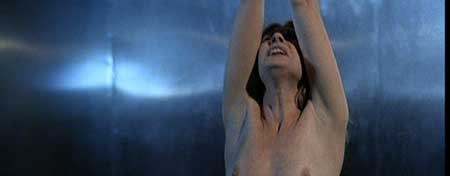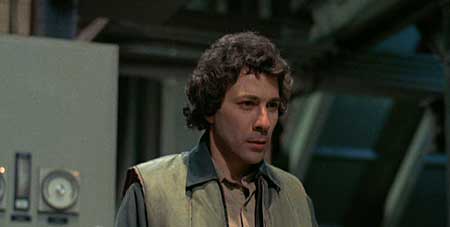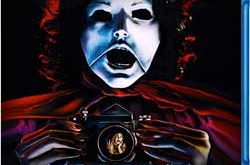A disturbed young man who was burned as a child by his sadistic mother stalks women with a flamethrower.
REVIEW:
“Don’t Go in the House” has historically been christened a “video nasty,” or a film that was censored and/or banned in the UK in the 1980’s due to it’s graphic nature. Despite its 1980 completion, it was only first shown in Britain in 1987, with heavy cuts. It was finally released uncut in December of 2011. Joseph Ellison wrote and directed this piece about a sadistic killer with a haunting past. The abuse the protagonist experienced as a child is a far cry from the upbringing Ellison himself had, with a moralistic father who moved him around the nation. Despite that childhood, or perhaps because of it, Ellison cut his teeth in the 1970’s horror film industry, working odd jobs here and there, until this, his directorial debut, opened to much controversy and fandom.
Dan Grimaldi plays Donny Kohler, who immediately strikes the viewer as a bit off. The opening scene shows Donny watch as one of his factory co-workers catches fire. Kohler seems infatuated with the flames. In some early flashbacks, it is shown that he was abused, specifically burned, by his mother as punishment when he was a child. Her death pushes his mind over the limit, and his mental deterioration quickly turns dangerous when he starts dishing out the same punishment he received as a child, to unsuspecting young women around town.
The obvious parallel, and one that many critics claimed hurt the film, is it’s inspiration from Alfred Hitchcock’s “Psycho” (1960). While the similarities are obvious, the two films are also completely different. Saying they were the same would be like claiming “Friday the 13th” (1980) and “A Nightmare on Elm Street” (1984) were identical. Ellison’s film was, at the time, a new kind of horror. Torture, extreme violence, and sexual exploitation run throughout, as the killer justifies his acts of violence through conversations with his deceased mother.
This film, along with “Maniac” (1980), was targeted as misogynistic, and held as an example as to why the horror film genre was dangerous to society. Its controversy, together with it being one of the first DVD releases when DVD players picked up in popularity, and with fan attention (including Quentin Tarantino’s selection of it in his first film festival in 1996), helped it rise from an uncertain doom, to becoming a cult classic.
As the film progresses, Donny gets lost in his own mind. He is confused between what is real and what isn’t. He becomes lost with the amount of victims piling up at his house, in a fireproof steel plated room. His hallucinations of his dead mother convince him to “punish” her by making his body count higher. As the bodies pile up, Donny continues to deteriorate, losing touch with the outside world, and with his own sanity.
This film has all the marks of a low-budget gore-fest. Canted angles abound, with cinematography that is uninspired. Decent acting from Grimaldi holds the piece together, even though many of the supporting characters are a bit sub-par. As a genre film though, these can be overlooked, if the story in intriguing, and the production has a certain amount of value to it. This films holds its own with some great pyrotechnic work, good make-up effects, and some great corpse effects.
The film does well to keep a thrilling pace throughout. The viewer can get lost, just as Donny does. A scene in a discotheque in the third act is especially disturbing, and exciting. Donny continues to spiral downward until he starts to lose control of himself.
Ultimately, this film lives up to its cult status, and really brings the heat as far as scares are concerned. Some frightening set pieces, accented by on-the-mark effects, and solid direction make this film stronger than it had to be. A thrilling, semi-slasher, this film is a must see for cult genre fans.
Don’t Go in the House (1980)
 Horror News | HNN Official Site | Horror Movies,Trailers, Reviews
Horror News | HNN Official Site | Horror Movies,Trailers, Reviews











